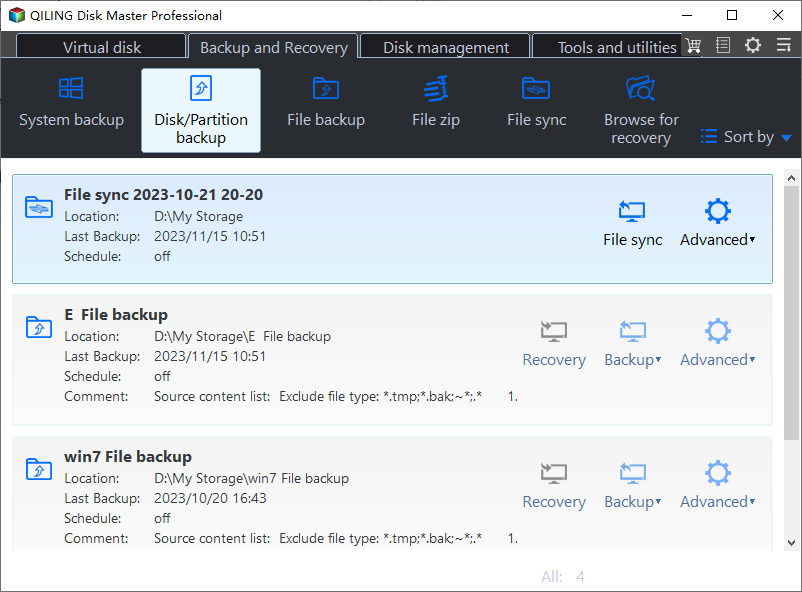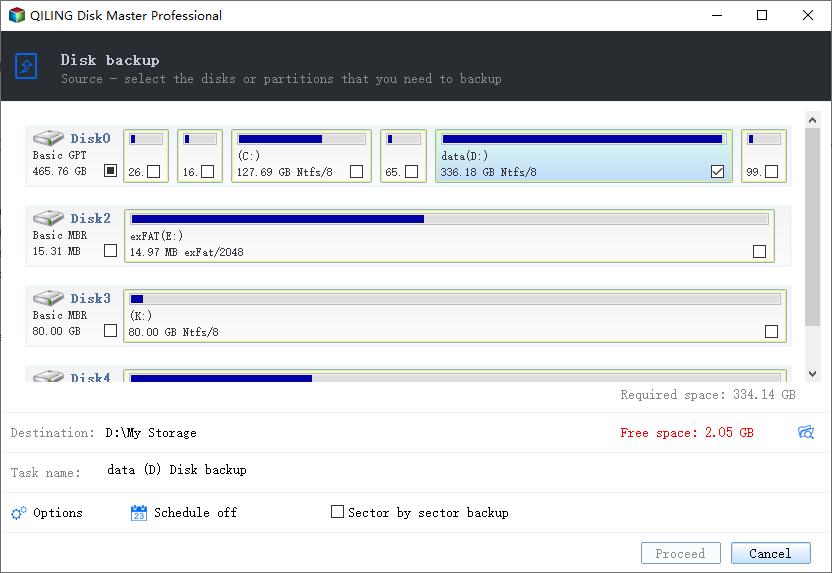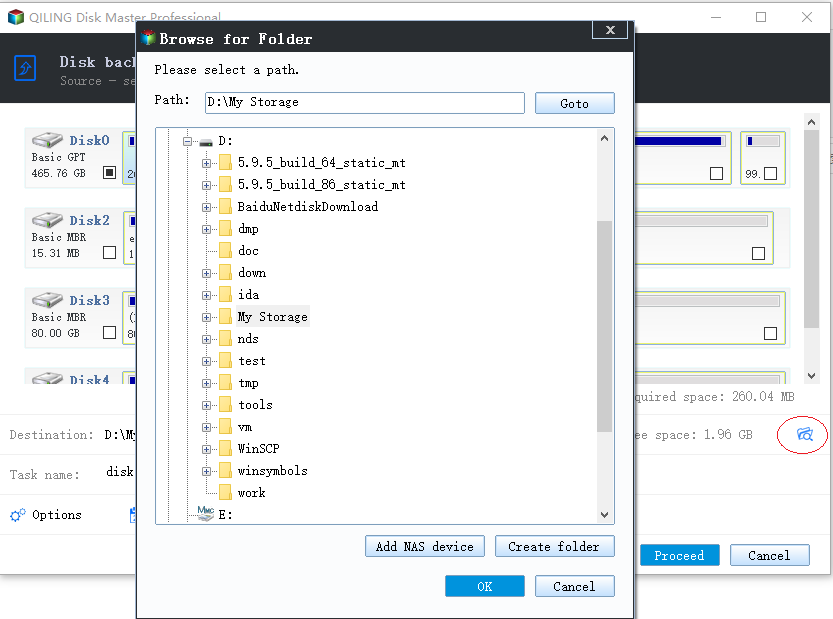How to Backup Dynamic Disk Volume for Windows 7, 8, 10, 11
Quick Navigation:
- Brief Introduction to Dynamic Disk
- Why We Need to Backup Dynamic Disk?
- Professional Backup Software for Dynamic Disk Backup
- Stepwise Guide to Backup Dynamic Disk in Windows 7, 8, 10, 11
- Summary
Brief Introduction to Dynamic Disk
Before creating a backup of a dynamic disk in Windows 7, it's essential to understand what dynamic disks are. In Windows, disks can be divided into two types: basic disks and dynamic disks. Most PCs use basic disks, which contain partitions like primary partitions and logical drives. Dynamic disks, on the other hand, are a type of disk that can be expanded or shrunk without having to recreate the disk, making them useful for managing large amounts of data. Understanding dynamic disks is crucial before attempting to create a backup of one.
Dynamic disks differ from basic disks in that they allow for the creation of various types of volumes, including those that span multiple disks, such as spanned and striped volumes, and fault-tolerant volumes like mirrored and RAID-5 volumes.
Dynamic disks offer additional features compared to basic disks, utilizing a database to track dynamic volumes and other dynamic disks. However, Windows OS Home edition does not support dynamic disks. Fortunately, it is possible to convert a dynamic disk to a basic disk.
Why We Need to Backup Dynamic Disk?
A user had a 500GB USB drive converted to a dynamic disk on Windows 7, which worked fine on Windows 7 but couldn't be recognized as an external drive on Windows XP.
The dynamic hard drive became invalid due to Windows OS Home editions not supporting dynamic disks. To resolve this issue, you need to convert the dynamic disk to a basic disk, but be aware that data may be lost or corrupted during this process. To ensure data safety, it's essential to back up the dynamic disk on Windows 7 before proceeding.
Professional Backup Software for Dynamic Disk Backup
Creating a Windows 7 dynamic disk backup can be a bit confusing, but using a third-party backup software like Qiling Disk Master Professional can make the process easier. This software can help you run dynamic disk backup with ease, making it a more manageable task.
- In Qiling Disk Master, four backup types are available: System, Disk, Partition, and File Backup. System and Disk Backup can be used to back up a dynamic disk.
- You can backup to a local disk, external hard drive, network location, or NAS devices.
- Windows operating systems, including Windows 11, 10, 8.1, 8, 7, Vista, and XP, are all supported, regardless of their edition.
Qiling Disk Master is an easy-to-use tool that keeps data safe, making it a reliable option for backing up dynamic disks in Windows 7/8/10/11. To use it, simply download Qiling Disk Master and follow the instructions provided to complete the backup process.
Stepwise Guide to Backup Dynamic Disk in Windows 7, 8, 10, 11
Step 1. Install and launch Qiling Disk Master, select "Disk/Partition Backup" under the "Backup" tab for partition/dynamic volume backup, or "System Backup" for system backup.
Step 2. Select the dynamic disk volumes that you want to backup.
In the Select Partition window, you can choose one or more volumes to be backed up, with the system volume marked as green. However, if the system volume is selected, it will suggest using the "System Backup" function to ensure the system remains bootable after restoration.
Step 3. After selecting the dynamic disk volumes you want to back up, you need to choose a destination path to save the backup image.
You have multiple choices to select a local path, such as another local disk or an external drive, or you can choose a network location or NAS device from the "Add Share or NAS Devices" option.
Step 4. To proceed, click the "Proceed" button, which will initiate the backup of the dynamic disk volumes. After a minute, the process will be complete, and you can then click the "Finish" button.
>> Options: You can also customize other backup settings, such as image compression and email notifications.
>> Schedule Backup: you can schedule a backup to run automatically.
>> Backup Scheme: You can set up automatic deletion of old backup images to free up disk space, and also choose between full, incremental, or differential backup options as needed.
Summary
Dynamic disk backup in Windows 7 is simplified with Qiling Disk Master, and you can also restore Windows 7 backup on another computer when needed. In addition to backup and restore features, Qiling Disk Master also offers a clone feature, allowing you to clone a dynamic disk in Windows 10, 8, or 7. Try it now!
Related Articles
- How to Clone Dynamic Disk in Windows 7/8/10 Effortlessly?
- How to Copy Dynamic Volume in an Easy Way (Windows)?
- Windows 7 Backup Stuck in the Progress [6 Ways + 1 Tip]
- How to Increase System Reserved Partition Windows 7/8/10?
When you try upgrading operating system, you might fail for there is not enough space on system reserved partition. So here we list the best method to help extend System Reserved partition in Windows 11/10/8/7 easily and securely.



